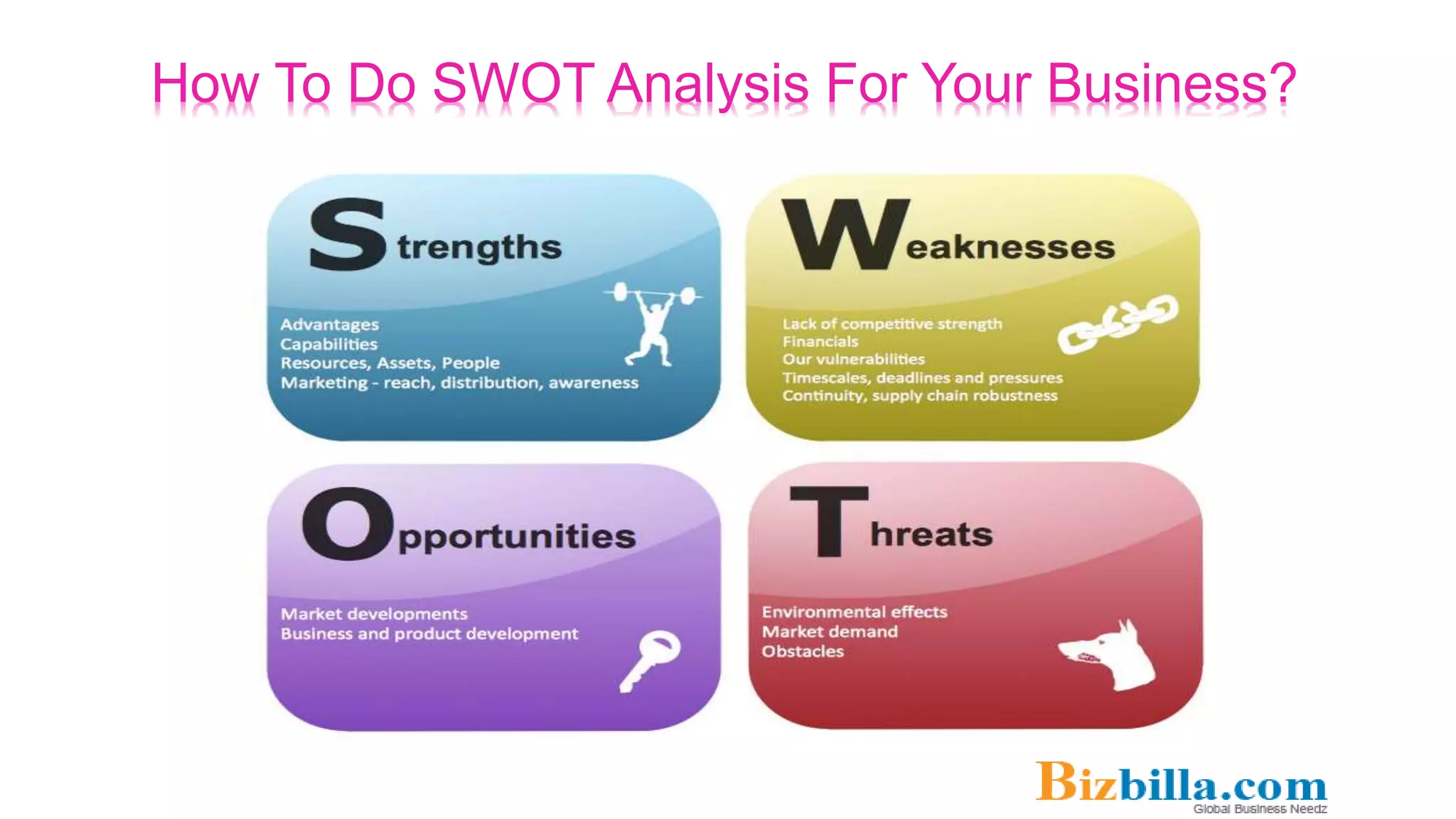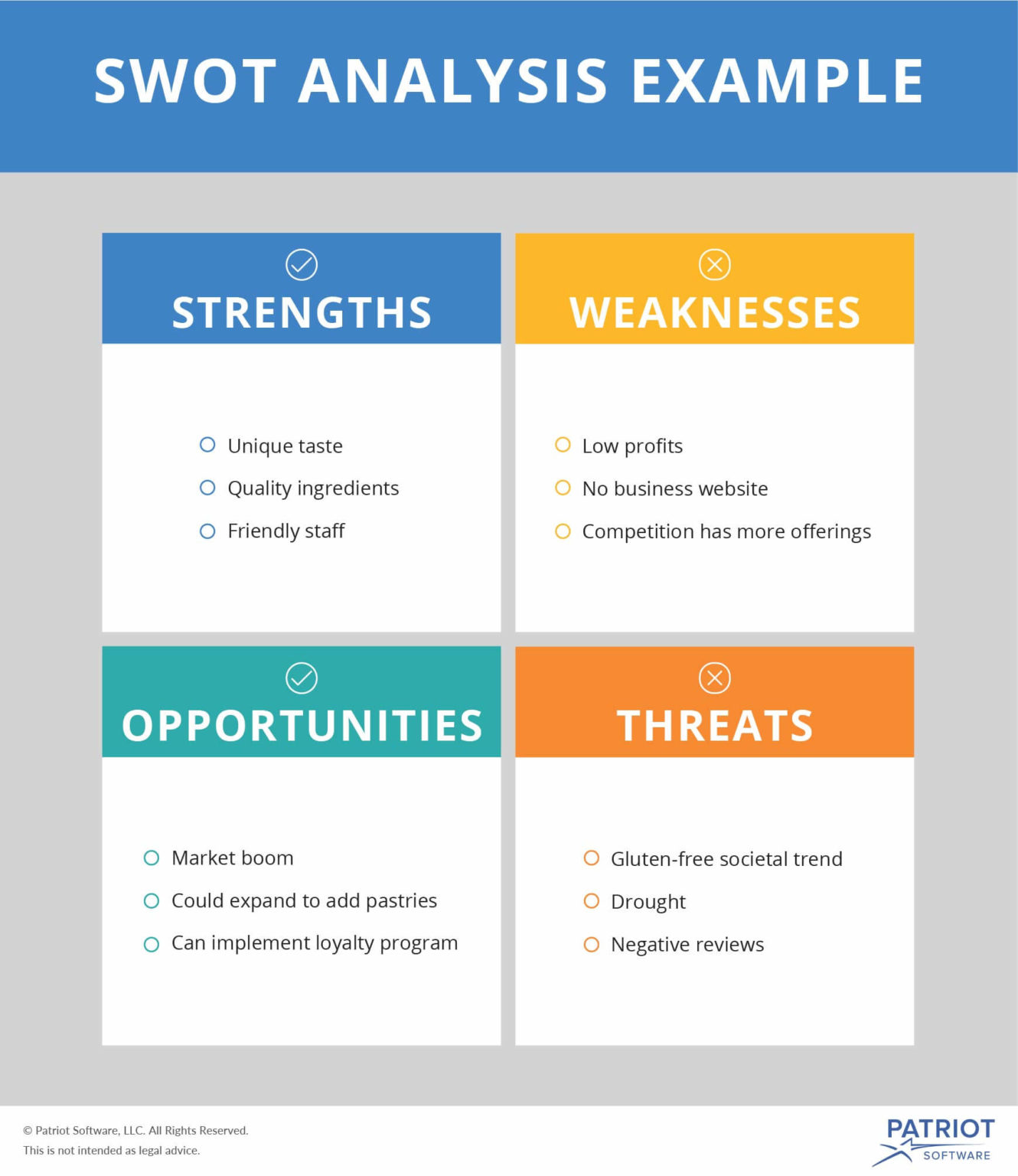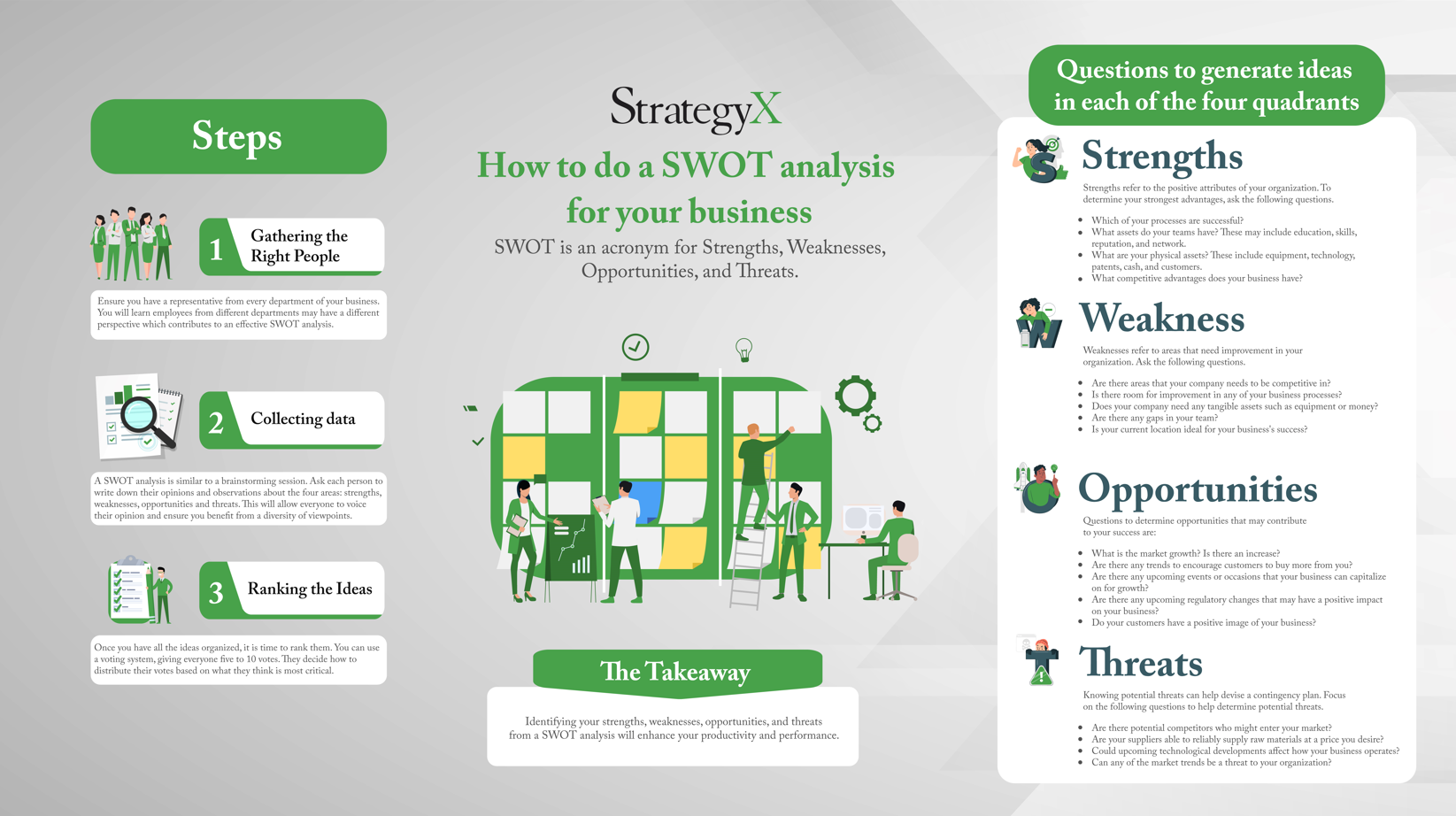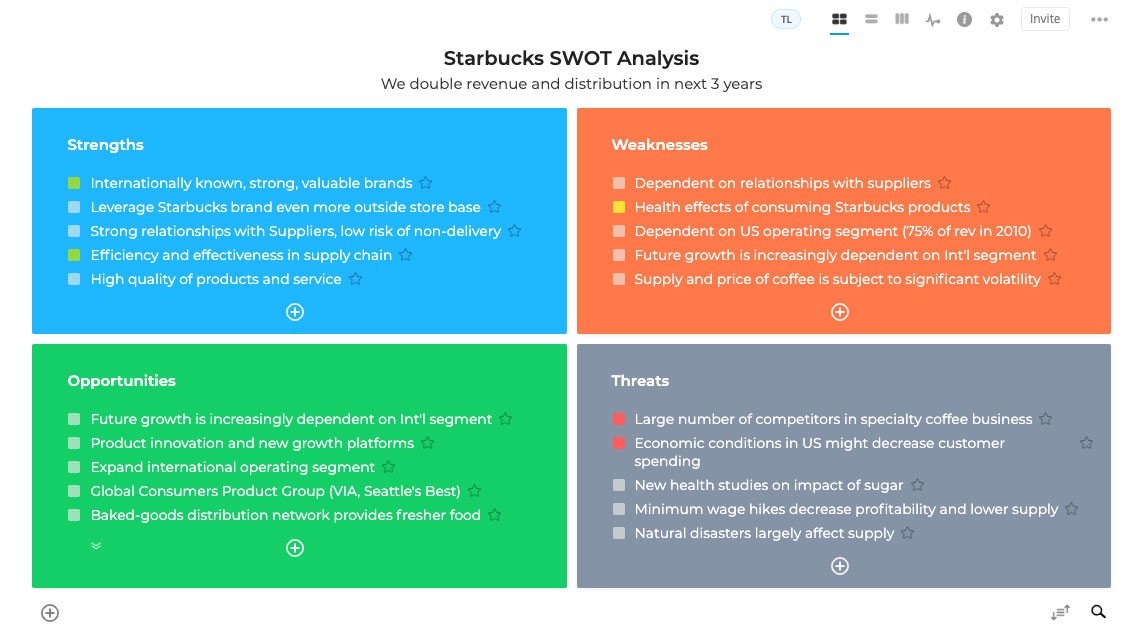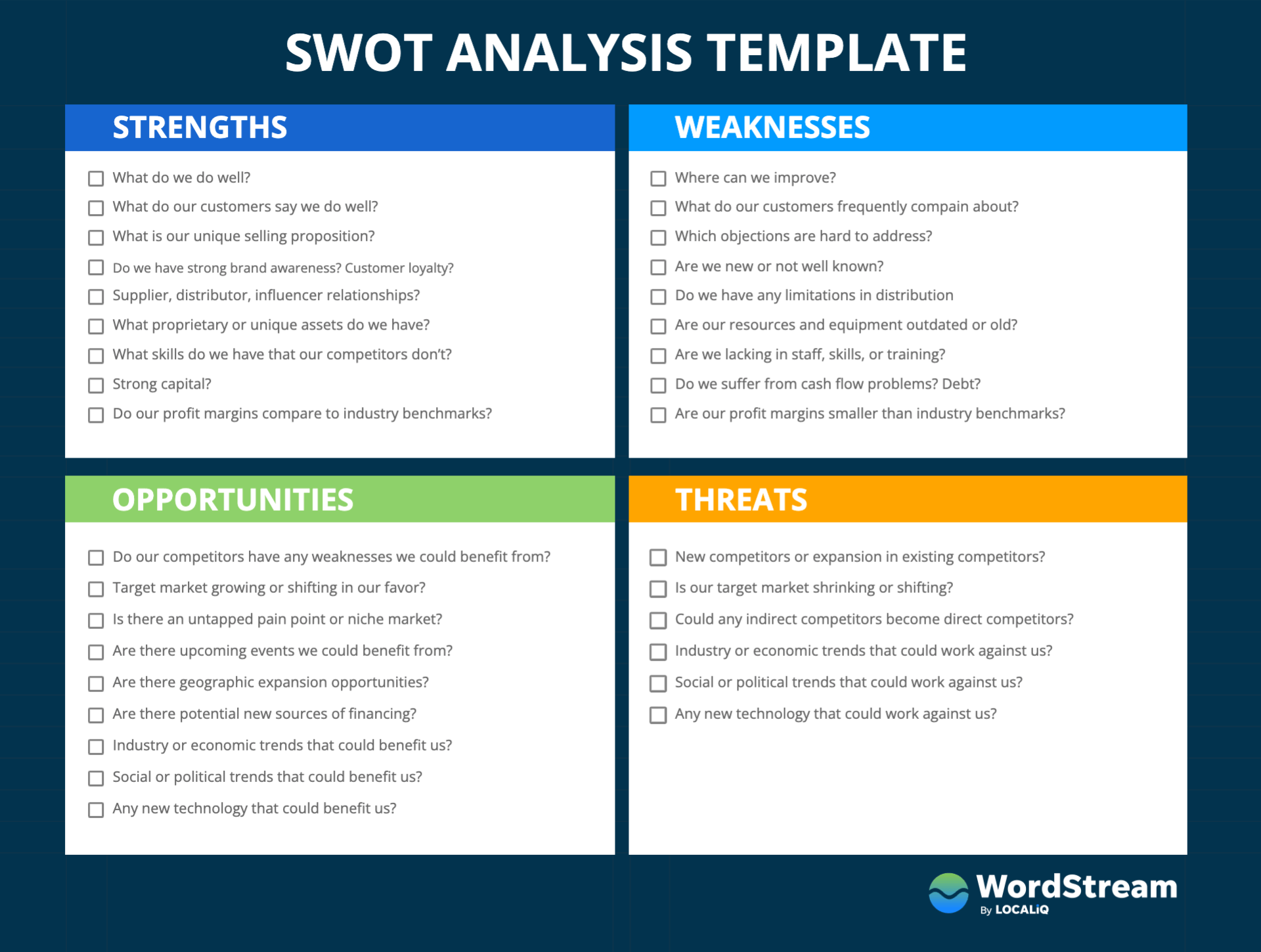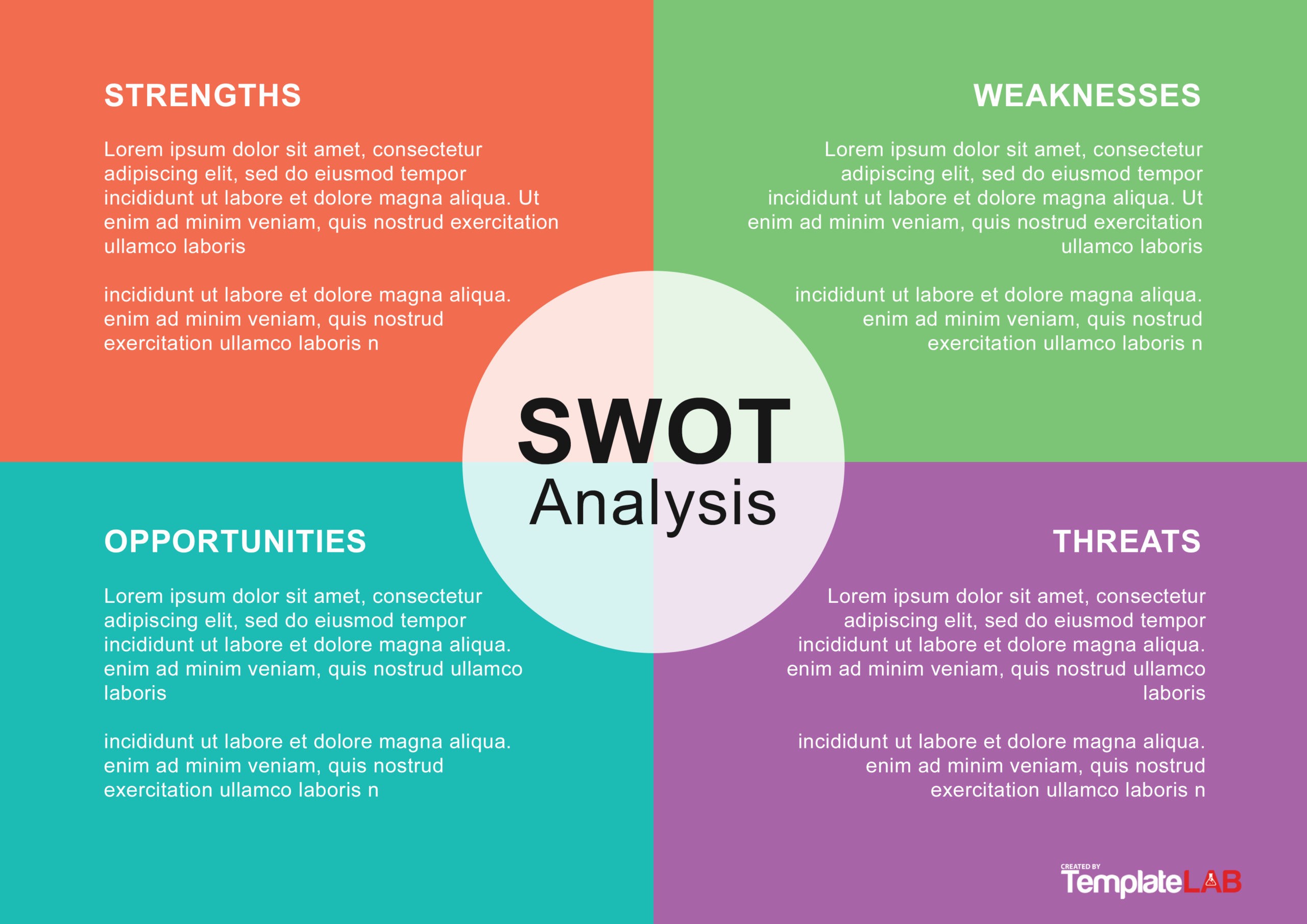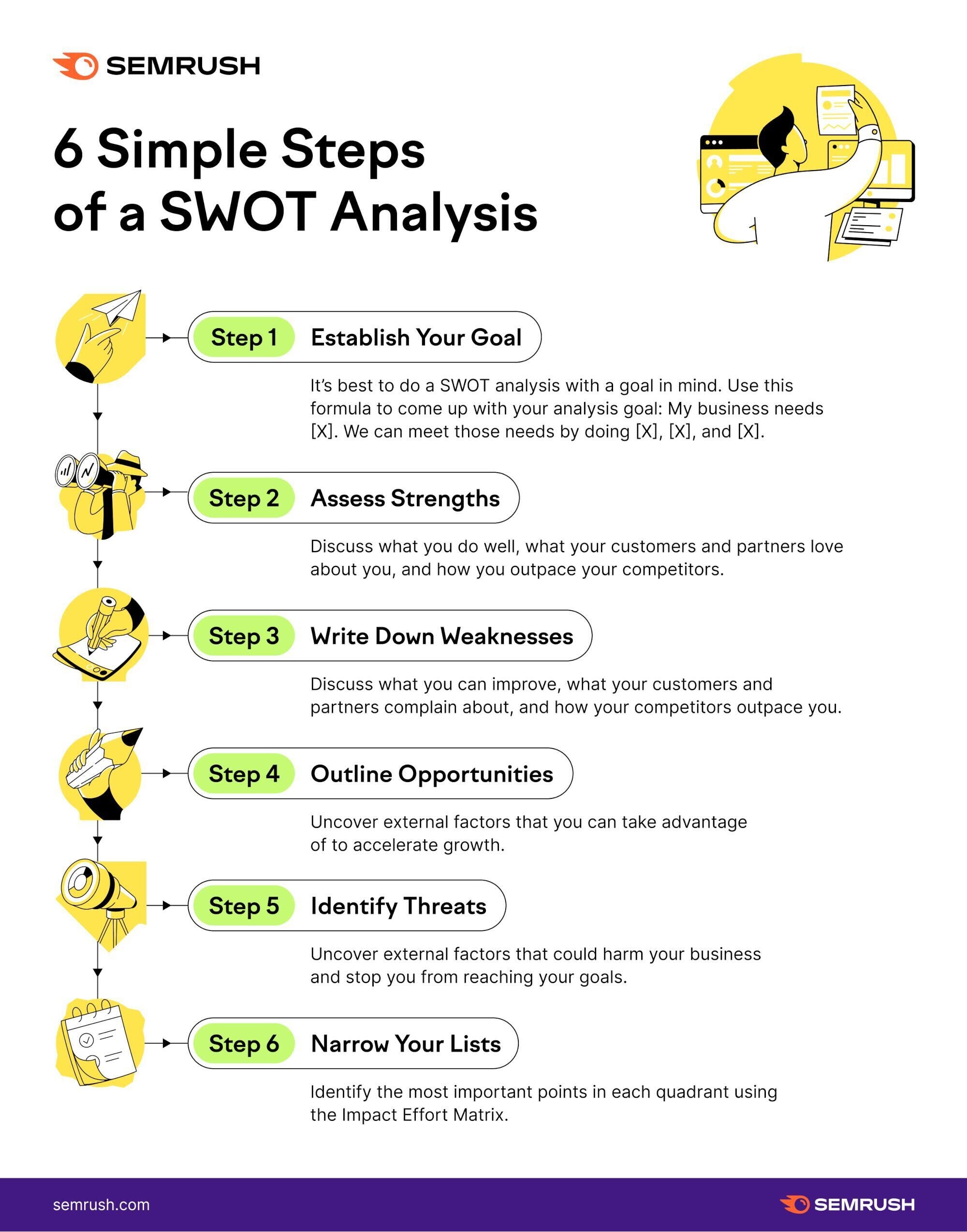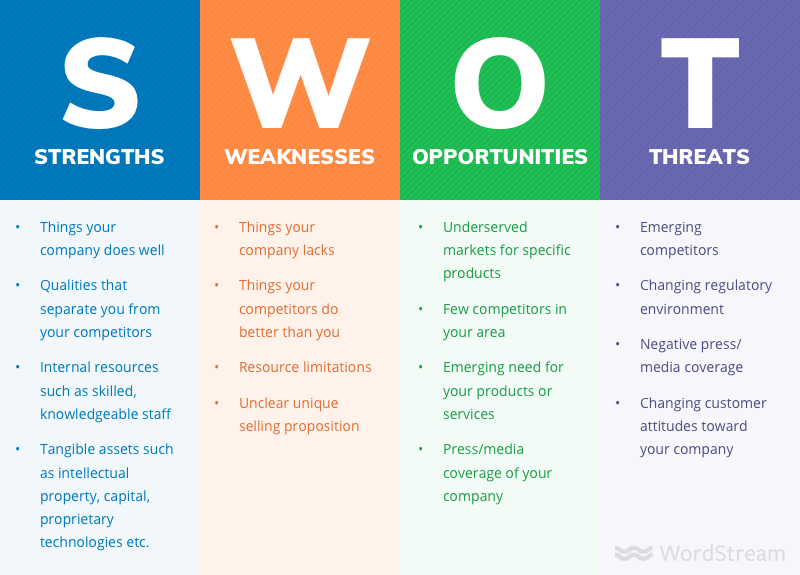How To Do A Swot Analysis For Your Business
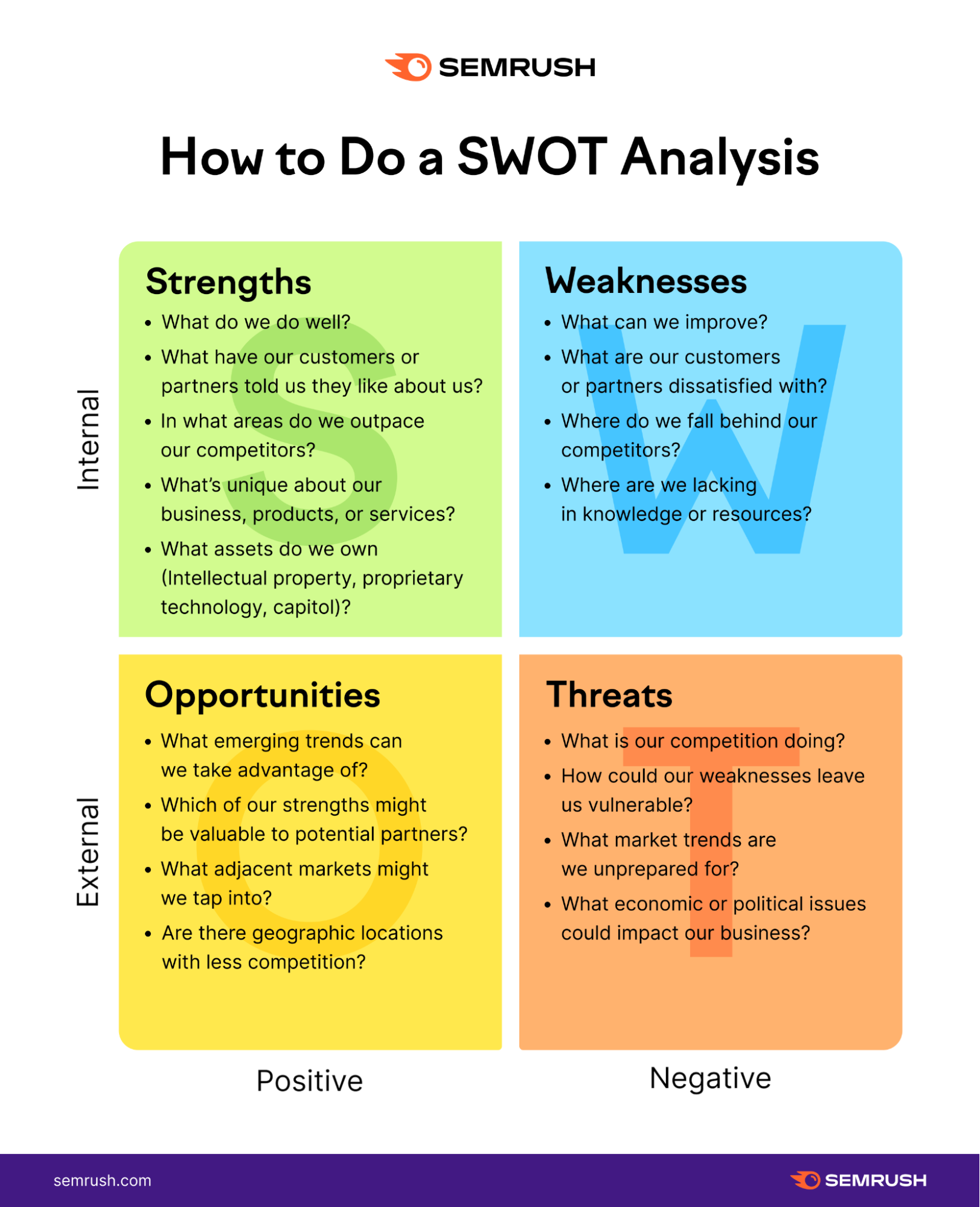
Imagine you're standing at a crossroads, a map in your hands, ready to embark on an exciting journey. But this isn't just any adventure; it's the journey of your business. Before taking that first step, wouldn’t you want to understand the terrain, the potential pitfalls, and the hidden opportunities that lie ahead?
The SWOT analysis is your compass, a strategic planning tool that helps you navigate the business landscape with clarity and confidence. This article will guide you through the process, transforming abstract concepts into practical steps you can implement today.
Understanding the SWOT Framework
SWOT stands for Strengths, Weaknesses, Opportunities, and Threats. It's a simple yet powerful framework that examines both internal (Strengths and Weaknesses) and external (Opportunities and Threats) factors affecting your business. Let’s break down each component.
Strengths: What Are You Good At?
Strengths are your internal advantages – the things your business does exceptionally well. This could be anything from a skilled team and innovative technology to a loyal customer base and a strong brand reputation.
Think about what sets you apart from the competition. Consider what resources you have readily available that your competitors might lack.
Asking yourself what your customers and team members consider as your strengths is a good place to start.
Weaknesses: Where Can You Improve?
Weaknesses are internal factors that hold your business back. Perhaps you have limited financial resources, outdated technology, or a lack of marketing expertise.
Identifying these areas allows you to focus on improvement. Addressing your weaknesses can be as simple as providing training or investing in new tools, leading to increased efficiency and profitability.
Be honest and critical in this area; identifying your areas for improvement is crucial.
Opportunities: What's On the Horizon?
Opportunities are external factors that your business can leverage to its advantage. This might include emerging market trends, changes in regulations, or new technologies.
Staying informed about your industry and the broader business environment is crucial for spotting opportunities. Are there new customer segments you can target, or new products or services you can offer?
Analyzing these external factors could unlock avenues for growth and innovation.
Threats: What Challenges Do You Face?
Threats are external factors that could negatively impact your business. Competitors, economic downturns, and changing consumer preferences are all potential threats.
Being aware of these challenges allows you to develop contingency plans and mitigate risks. What steps can you take to protect your market share or adapt to changing conditions?
Proactive threat management can mean the difference between survival and failure.
Putting It All Together: The SWOT Matrix
Once you've identified your Strengths, Weaknesses, Opportunities, and Threats, it's time to organize them in a SWOT matrix. This is a simple four-quadrant grid that provides a clear visual representation of your analysis.
This visual tool allows you to see the interconnectedness of these elements and develop strategies that leverage your strengths to capitalize on opportunities, mitigate threats, and address weaknesses.
Here's how to construct a SWOT matrix:
Top Left: Strengths
Top Right: Weaknesses
Bottom Left: Opportunities
Bottom Right: Threats
Turning Analysis into Action
The real value of a SWOT analysis lies in its ability to inform strategic decision-making. Use the insights gained from your matrix to develop actionable strategies.
For example, can you leverage your strengths to take advantage of a particular opportunity? Can you address a weakness to minimize the impact of a threat?
Use the SWOT analysis to inform your business plan, marketing strategy, and overall organizational goals.
The SWOT analysis is not a one-time exercise; it's an ongoing process. The business environment is constantly changing, so it's important to regularly review and update your analysis.
By staying informed and adapting your strategies accordingly, you can ensure that your business remains competitive and resilient.
As you continue to navigate the exciting journey of your business, remember that the SWOT analysis is your trusted compass. Use it to chart your course, overcome obstacles, and seize opportunities, and you'll be well on your way to achieving your goals.


![How To Do A Swot Analysis For Your Business SWOT Analysis: How To Do One [With Template & Examples] - Blog](https://blog.hubspot.com/hs-fs/hubfs/swot-analysis-example.jpg?width=3000&height=2000&name=swot-analysis-example.jpg)


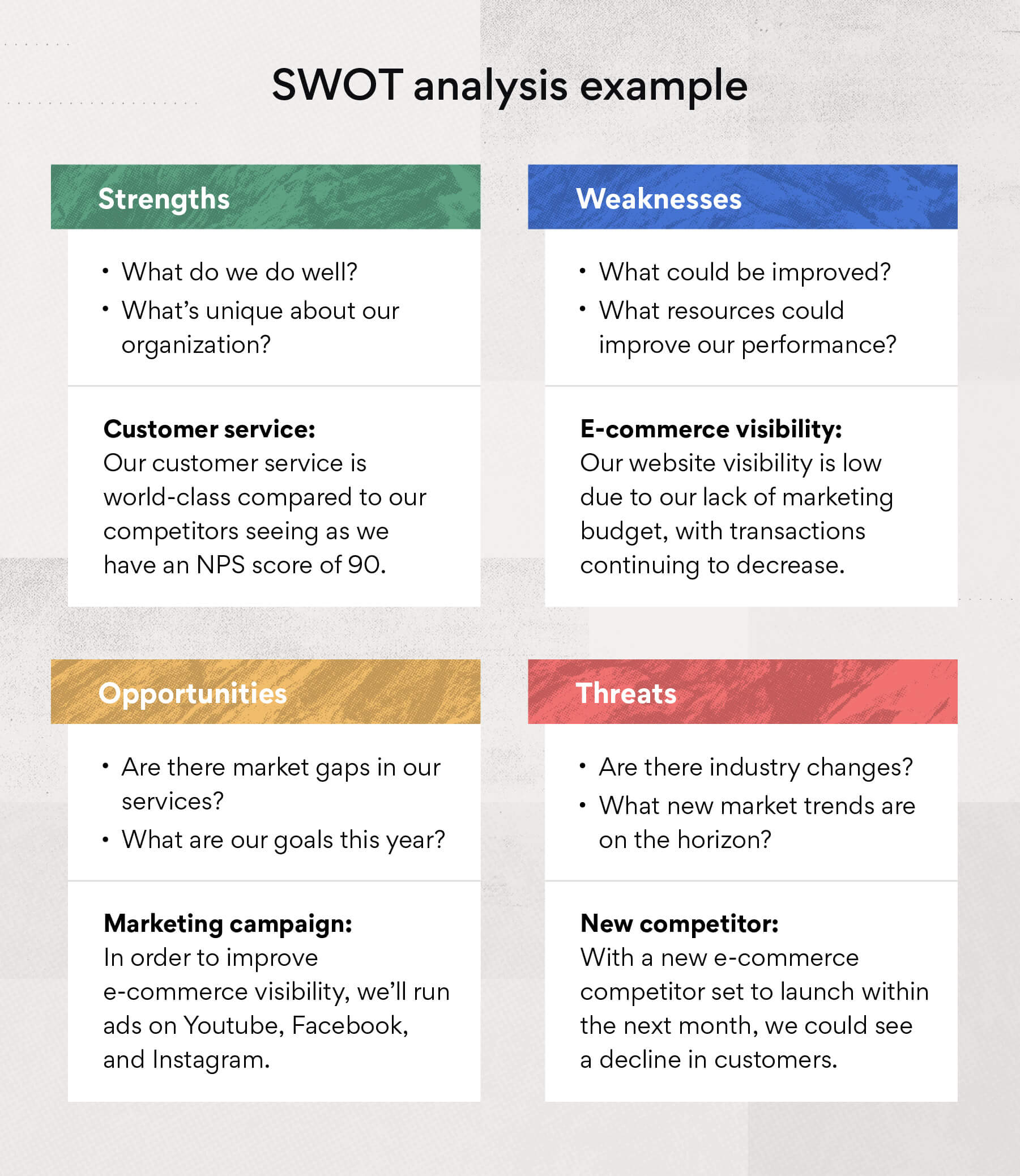
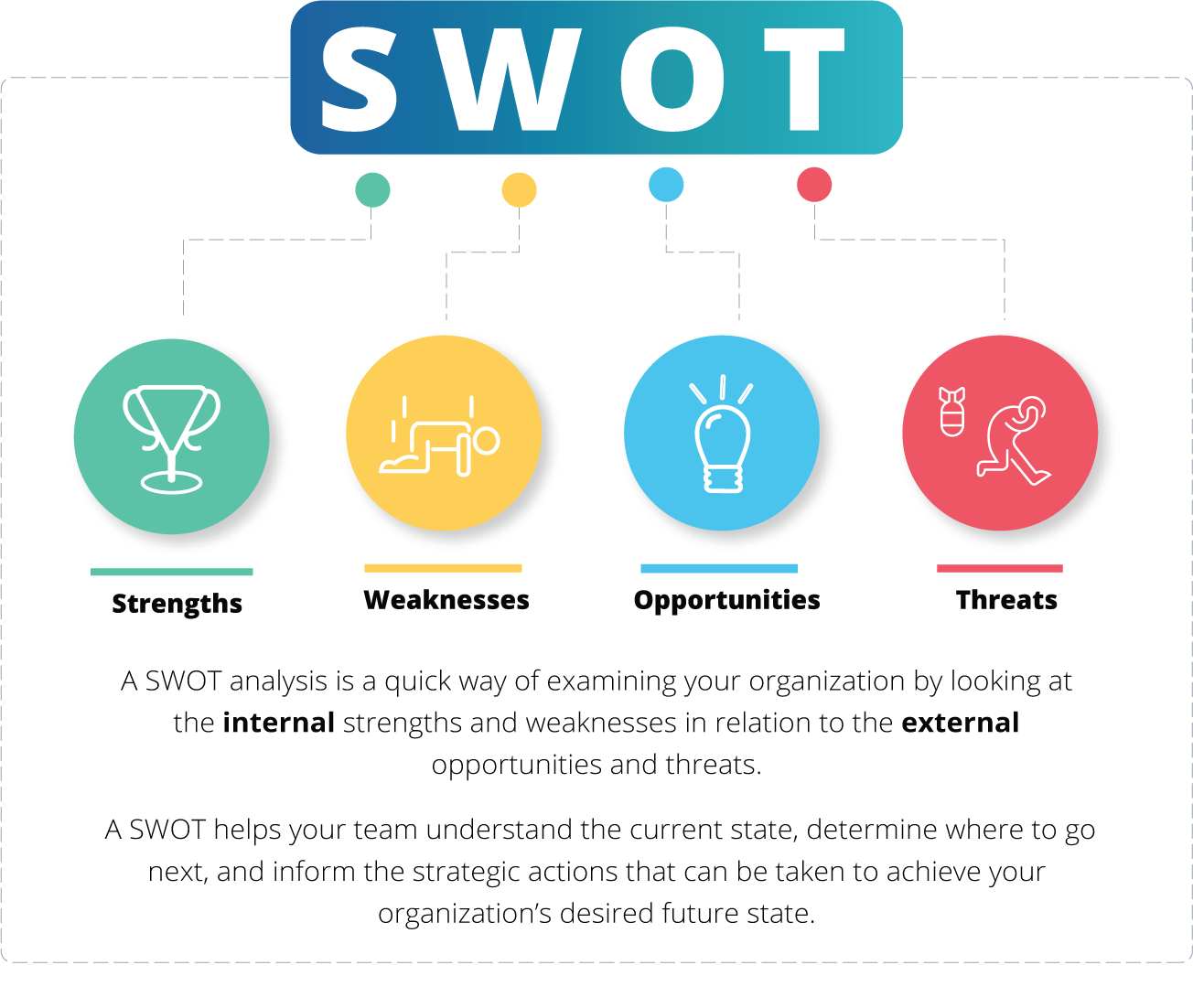

![How To Do A Swot Analysis For Your Business How to do a SWOT analysis [with examples & templates] — BiteSize Learning](https://images.squarespace-cdn.com/content/v1/6348398d9d21fd6277c64f96/485e7404-ef4b-40fb-8cf4-84f14580fe43/swot+analysis+matrix+diagram+templates.png?format=2500w)
